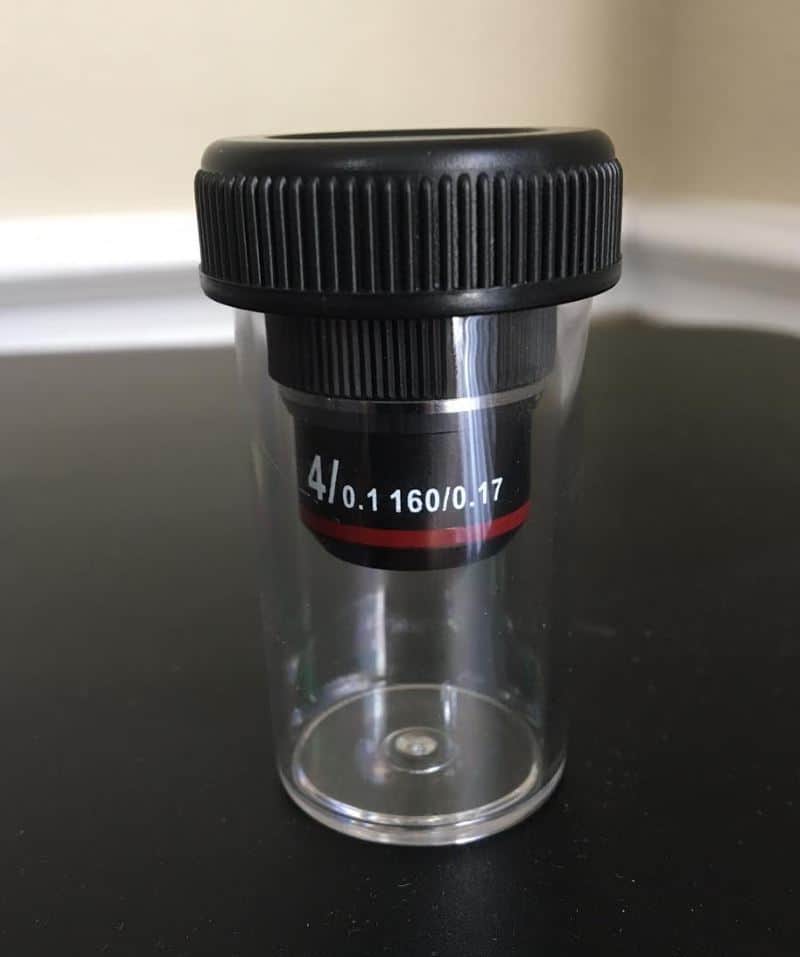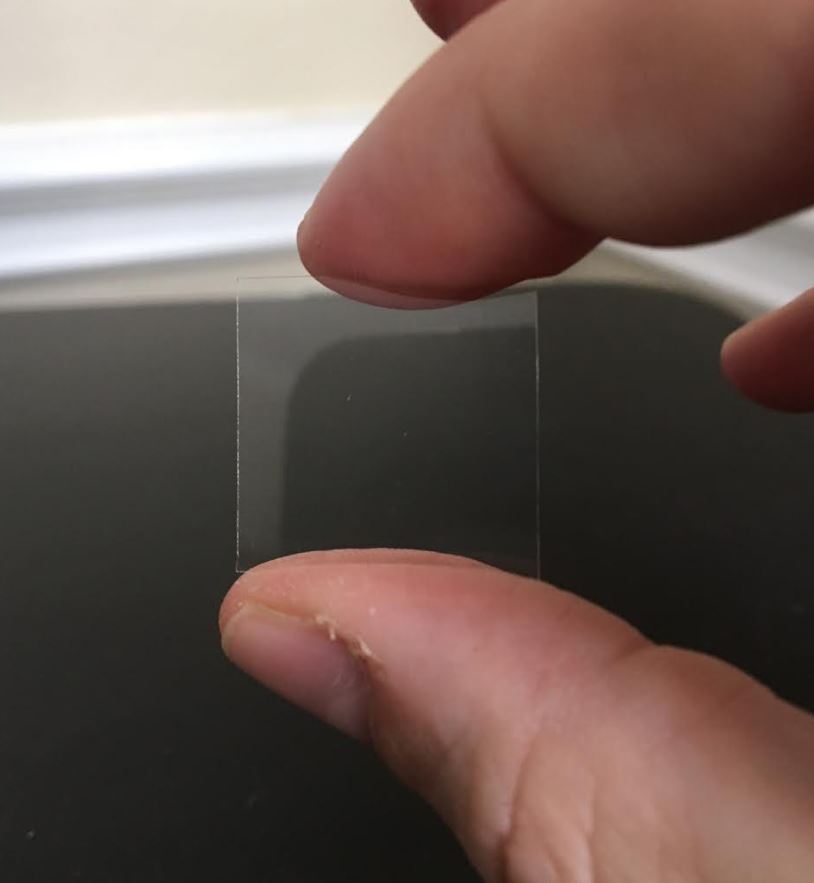Microscopy is all about precision where even small variables can affect your observations. But microscopes are sensitive and often complex tools. Because of this, keeping these instruments clean is an essential step in ensuring their accuracy.
To prevent dust and dirt from accumulating on your microscope between uses you need to store your microscope in a clean and dry place and use a microscope dust cover. This will prevent the majority of dust and dirt accumulation, but it is recommended to clean the entire microscope after about 200 hours of use. For most amateur microscopy, enthusiasts, and hobbyists this is about once every two years.
The same way you would take care of your car to prevent future breakdowns, so to do you need to keep up with and clean your microscope to prevent frustrating degradation of optical clarity. In this article we will go through how to can prevent dust and dirt and keep your microscope clean work working the way it should.
Problems Dirt and Dust Cause a Microscope
A microscope that has not been adequately cleaned can have many problems, which include:
- Blurred and obscured images: Microscopes can magnify images by hundreds or thousands of times! It means even the smallest obstructions can have a massive impact on what you observe. Any grease or oil on a lens can cause your viewing area to appear blurry and out of focus. While a tiny speck of dust may be many times larger than whatever you hope to observe, it could potentially block your view altogether.
- Damage: All but the gentlest materials can scratch microscope lenses. Even worse, as fragile as they are, not wiping them when there is oil on the lens can lead to etching. Objectives are the most often cleaned part of the microscope. The oil objective in particular has to be cleaned after every use because the objective is in contact with immersion oil and if it is not cleaned can cause visual obstructions.
- Hazardous Contamination: Viruses, bacteria, mold, and blood are just some of the substances that can be exposed to a microscope. Without regular cleaning, a microscope is not only unsanitary, but it is also potentially dangerous to everyone who handles it.
How to Prevent Microscope Contamination
Microscopes, particularly their lenses, are sensitive instruments that need to be handled with care. There are many ways they can be stained, causing all manner of issues, but they can be avoided with diligence and care.
- Handle with care – Always carry a microscope by its arm, supporting its base with your other hand. Never touch the lens of a microscope with your bare hands. The natural oils in your skin will obscure your vision through the lens with smears.
- Be careful with the objective lens – The microscope’s objective lenses can be used to view samples at a very close range. It is important to avoid pressing the lens against your sample to prevent stains and scratches. When transporting a microscope long distances or when an objective is not needed, use a microscope objective container. These specialized containers allow the objectives to be suspended in the container and protected by the plastic around it.

- Use microscope slides properly – These thin pieces of glass are used to observe specimens by allowing light to pass through the slide and specimen. Used with a slide coverslip, they also keep the microscope clean and protect it and the user from hazardous materials like bacteria, viruses, or blood. Slide coverslips not only compress samples, making it easier to focus, but they also prevent the objective lenses from touching your samples. Make sure you never touch the middle of the slide coverslip or slide because it can leave smudges which can reduce the overall image quality.

- Store properly – After use and cleaning, store your equipment in a clean, dry place. Moisture and humidity can lead to the growth of mold or the corrosion of mechanical parts.
How to Clean the Microscope When Dirty
Like virtually everything else, it may be difficult or impossible to shield a microscope from getting dirty entirely. Because of this, knowing how to clean your equipment effectively is an integral part of maintaining one. A microscope that is well cared for can last as much as ten years before it needs replacement.
Here are instructions to properly clean your microscope:
- Carefully disassemble the microscope lenses and head from the body. Then place lenses on a smooth, dust-free surface.
- Use a rubber blower, or similar instrument, to blow loose material off of lenses gently. This should be the first step of lens cleaning, as such material can be highly abrasive against the delicate glass surface and should be removed before the lens is wiped off. You can snag an air puffer here on Amazon or an office supply store.

- Always use lens paper and lens cleaning fluid to clean the lenses of a microscope. Tissue, paper towels, and most fabrics are too coarse to use on these delicate instruments. Remember that lens paper is a disposable, single-use item. Do not use the same paper across multiple lenses or save a used one for later use.

- Be sure to gently wipe the lenses in a spiral pattern, starting from the center and working outwards, the same way you might clean a DVD or Blu-ray disc. Dirt and dust pinned under your lens paper can scrape the glass and still cause damage, so you must not apply too much pressure. For more detailed steps how to clean microscope objectives check out this post.
- Clean non-glass surfaces with mild soap and lukewarm distilled water using a soft cloth. This method is acceptable for rubber, metal, and plastic sections of your equipment, but you need to take special care to avoid applying these cleaners to your lenses, or you risk damaging them.
- Disinfect and sterilize surfaces with 70% ethanol. Ethanol is one of the few cleaning agents that can be safely applied to a lens.
- Be sure to wipe away any dust on the microscope stage and the surface of the illuminator. Like many electronics, the illuminator’s electrical charge draws a great deal of dust from the air.
- Use a microscope dust cover to prevent the build-up of dust between uses. If you do nothing else, make sure you use a microscope cover. This will prevent most of the dust and dirt accumulation you’ll face during the life of your microscope.

Useful Items for Cleaning a Microscope
There are many tools you can use to clean and maintain a microscope. Here are some of the most important:
- Microscope Dust Cover Grey (Large) 525x585mm (21×23 inch) BoliOptics – Stow away your microscope without needing to worry about dust and moisture. The cover is simple to use as it easily slides over the equipment, and its transparent material makes it easy to identify items without removing them.
- AmScope CLS Sparkle Optical Lens Cleaner – Soap and standard glass cleaners are too harsh for a microscope’s sensitive parts. While they can wash away dirt, dust, and oil, they contain chemicals that can damage and ruin a lens. The Leader Cleaning Solution will clean your lenses without the risk of damage. The solution is gentle enough to work with any kind of delicate glass, such as cell phone screens and laptop monitors.
- Soccerene Ultrasoft Microscope and Camera Lens Cleaning Paper – Ordinary cloth should never be used to clean a microscope’s lens. Even soft tissue is made with coarse fibers that can leave scratches. Blemishes like these can compromise your lens and make observations difficult. Soccerene’s Ultrasoft is a lens cleaning paper smooth enough to glide over the glass without carving tiny grooves.
Takeaways
Few instruments are as precise as microscopes, and that means knowing how to prevent dust and dirt from settling on them is a crucial part of maintaining the beautiful, sharp images they can produce. We hope you find this guide helpful, and make sure you practice what you have learned to extend your equipment’s life and make photographs you take from your microscope the best they can possibly be given the equipment you have.


